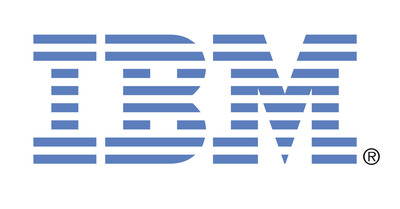IBM Survey: Nearly Half of IT Decision Makers Favor Solid-State Storage Technology
ARMONK, N.Y., Sept. 21, 2011 /PRNewswire/ -- IBM (NYSE: IBM) today released the findings of a customer survey that demonstrates pent-up demand for solid-state disk technology as a successor to flash and hard-disk drives. Customers are embracing high-performance solid-state disks to support growing data storage demands driven by cloud computing and analytics technologies.
(Logo: http://photos.prnewswire.com/prnh/20090416/IBMLOGO)
More than half of the customers surveyed (57 percent) responded that their organization needs to develop a new storage approach to manage future growth. The survey of 250 U.S. IT professionals in decision-making positions was conducted by Zogby International in August 2011 on behalf of IBM.
The survey demonstrates a need for a new class of storage that can expand the market for solid-state drives (SSDs) by combining increased data delivery with lower costs and other benefits. Nearly half (43 percent) of IT decision makers say they have plans to use SSD technology in the future or are already using it. Speeding delivery of data was the motivation behind 75 percent of respondents who plan to use or already use SSD technology. Those survey respondents who are not currently using SSD said cost was the reason (71 percent).
Anticipating these challenges years ago, IBM Research has been exploring storage-class memory, a new category of data storage and memory devices that can access data significantly faster than hard disk drives -- at the same low cost.
Racetrack memory, a solid-state breakthrough technology, is a potential replacement for hard drives and successor to flash in handheld devices. A storage device with no moving parts, it uses the spin of electrons to access and move data to atomically precise locations on nanowires 1,000 times finer than a human hair. This technique combines the high performance and reliability of flash with the low cost and high capacity of the hard-disk drive. It could allow electronic manufacturers to develop devices that store much more information -- as much as a factor of 100 times greater -- while using less energy than today's designs. Racetrack memory is featured as one of IBM's top 100 achievements as the company celebrates its Centennial this year.
These new storage technologies could also alleviate critical budget, power and space limitations facing IT administrators. Today, an average transaction-driven datacenter uses approximately 1,250 racks of storage, taking up 13,996 square feet and 16,343 kilowatts (kw) of power. By 2020, storage-class memory could enable the same amount of data to fit in one rack that takes up 11 square feet and 5.8 kws of power.
"Technology shifts and market forces are fundamentally changing the composition and design of storage systems," said Bruce Hillsberg, director of storage systems, IBM Research - Almaden. "Evolving current storage technologies alone would not answer customers' diverse and rising data storage demands. We're constantly researching new materials and processes to extend existing storage technologies and get ahead of the performance and capacity requirements of future systems."
As part of its solid state research, IBM Research also invented a technology that makes it easier and more economical for clients to intelligently manage data in tiers. IBM's currently available Easy Tier technology automatically moves the most active data (such as credit card transactions) to faster SSDs to prioritize and provide quick access to data for emerging workloads like analytics. The system moves secondary data (less urgent data to be saved, for example, for regulatory requirements) to more cost-effective storage technologies. This is an important technology in preventing what IBM characterizes as "SSD sprawl" or the overuse of the technology, helping clients use SSDs appropriately to maximize data access while keeping costs in check.
In the last year, IBM Research recorded a number of storage breakthroughs, including a 29-gigabit per-square-inch tape demonstration; a world record of scanning 10 billion files on a single system in 43 minutes; and the creation of a 120-petabyte data system that is roughly 10 times larger than the biggest single data repository on record. In addition, IBM has introduced over five storage products within the last two years based on significant storage innovations from IBM Research.
Survey Spotlights Concerns over Data
Today's survey also found that:
-- Nearly half (43 percent) say they are concerned about managing Big Data;
-- About a third of all respondents (32 percent) say they either plan to
switch to more cloud storage in the future or currently use cloud
storage;
-- Nearly half (48 percent) say they plan on increasing storage investments
in the area of virtualization, cloud (26 percent) and flash memory/solid
state (24 percent) and analytics (22 percent); and
-- More than a third (38 percent) say their organization's storage needs
are growing primarily to drive business value from data. Adhering to
government compliance and regulations that require organizations to
store more data for longer -- sometimes up to a decade -- was also a
leading factor (29 percent).
For more information on IBM storage go to www.ibm.com/storage and www.almaden.ibm.com/storagesystems/.
Contacts:
Kara Yi Ari Entin
IBM Communications IBM Communications
415-545-6742 408-927-2272
kyi@us.ibm.com aentin@us.ibm.com
SOURCE IBM
